STRUCTURED SOUND SYNTHESIS
PROJECT (SSSP) VIDEOS
Bill Buxton
In 1975 I returned to Canada from Holland,
where I had been teaching, studying, and generally working as a composer
and performer, at the Institute of Sonology in Utrecht. I came to
the University of Toronto at the invitation of Leslie Mezei as an informal
"Artist in Residence" in the Dynamic Graphics Lab which he co-directed.
I came with virtually no technical background, other than some basic electronics,
and elementary programming skills. However, I did have a pretty strong
background in electronic and computer music, and because of that, a
very clear idea of what I thought it could and should be (in contrast to
what it was at the time).
Mezei, along with his co-director, Ron
Baecker, and the chair of the Department of Electrical Engineering, K.C.Smith,
for some strange but wonderful reason, listened to my ideas, and took them
seriously. They coached me in writing a research proposal to the
Social Sciences and Humanities Research Council of Canada, which was submitted
under their name (after all, who the hell was I?), which was actually accepted.
At the same time, they figured out a way
that I could become a graduate student in Computer Science at the University
of Toronto (no small thing since I didn't meet the entrance requirements
for 1st year undergraduate), which brought with it student support.
The reality is that I went to graduate school for: the money.
It beat working in a bar or restaurant. I never had any intention of becoming
a researcher. I just wanted to make my instrument, and then go back
to becoming a full-time musician. Hah!
Anyhow, with the help of the above three
mentors, and a lot of fellow students (whose names appear in the publications
cited below), came the Structured Sound Synthesis Project (SSSP).
Now a word about the name. The project was based in the Computer
Systems Research Institute, and was receiving research funding. Consequently,
I had to hide the fact that it was really motivated by music and artistic
objectives. So, I figured that music was structured sound, and that
was a far more scientific sounding description, so the SSSP it became.
As long as I got my system, I didn't care what it was called.
The project received funding from around
1976-7, and continued to exist until about 1984.
During that time, we built one of the first
digital syntesizers, certainly one of the first portable (if you had a
van) digital live performance systems (at a time when tape music dominated
computer music performances), and developed a lot of the graphical user
interfaces for music, which are now common place.
This project laid the foundation for the
rest of my career, such as it is.
I have to say, looking back, it was pretty
cool. We designed a built a 16 voice digital synthesizer to make
the sounds. We controlled it in real time via a dedicated DEC LSI-11
microcomputer. Tom Duff and Rob Pike wrote a real-time package that
let it run as a slave to our PDP-11/45 minicomputer, which was running
an early version of UNIX. The real-time LSI-11 communicated
with the time-shared UNIX machine via some dual-port memory using a modification
to UNIX written by Bill Reeves. For composition, and "studio" related
things, we made heavy use of interactive computer graphics, employing a
graphs package written by Bill Reeves (without whom I would never have
been able to get the data structures right).
For concerts, we decoupled the LSI-11 from
the 'mothership', and used it as a stand-alone microcomputer. While
it no longer had the fancy graphics, nevertheless, even using only a 24-line
x 80-column terminal, we were able to used graphical interaction.
What we did is lay the control panel out on the screen like a spreadsheet
(we didn't call it that at the time, since the spreadsheet had not been
invented yet, but see the video of Conduct, below), and control
the cells with a tablet and other graphical controllers. We actually
had 8 RS-232 ports on the device (remember, this was years before MIDI)
for control. The whole thing ran unbelievbly fast since Tom Duff
and Rob Pike had written a tiny kernel for the machine that let us run
compied C code native on it, without any operating system. This included
support for all of the input devices, the display, the synthesizer, and
even two huge (by today's standards) floppy disk drives.
Except for the last one, the videos below
shows the system circa 1980-81. This final clip shows some follow-on work
by John Kitamura. The articles directly relating to the individual
clips are cited in the adjoining text. Additional publications are
cited directly below. Almost all of them are on-line and can be accessed
by clicking on thier titles.
Interaction is all about dynamics, and
video and cinematic form in general, are critical to helping foster better
communication and literacy. Hence, you are encouraged to copy and
share any of this material for non-commercial, educational, and research
purposes. Please just cite the source.
As usual, comments and suggestions are
always welcome.
Ref:
Buxton, W., Fogels, A., Fedorkow, G., Sasaki,
L., & Smith, K. C. (1978). An Introduction
to the SSSP Digital Synthesizer. Computer Music Journal (4),
28-38.
Buxton, W., Reeves, W., Baecker, R., &
Mezei, L. (1978). The Use of Hierarchy and
Instance in a Data Structure for Computer Music.
Computer Music
Journal 2(4), 10-20.
Fedorkow, G., Buxton, W. & Smith, K. C.
(1978). A Computer Controlled Sound
Distribution System for the Performance of Electroacoustic Music. Computer
Music Journal 2(3), 33-42.
Kitamura, J., Buxton, W., Snelgrove, M. &
Smith, K.C. (1985).
Music Synthesis by Simulation
Using a General-Purpose Signal Processing System, Proceedings of
the 1985 International Computer Music Conference (ICMC), Vancouver,
155-158
Note: To play any of the
videos, just click on the associated thumbnail. I am in the process
of uploading full-resolution copies of these videos onto YouTube. If the
video that you want to play is still in low-res Flash, contact
me and I will attempt to upload it ASAP. For your information, all of the
videos that I have uploaded onto YouTube appear in the channel:
wasbuxton.
 |
Overview / Introduction
(2 min. 18 sec.)
University of Toronto
1980-81 |
This clip provides a brief overview
of the system, the project, and its objectives. The system broke
down into 3 components, each supporting a different phase of the musical
"pipeline", composition, orchestration and live performance. The
next three clips demonstrate one of the tools used for each of these three
phases.
Ref:
Buxton, W. (1978). Design Issues
in the Foundation of a Computer- Based Tool for Music Composition. Technical
Report CSRG-97. Toronto: University of Toronto.
Buxton,
W. & Fedorkow, G. (1978). The Structured Sound Synthesis Project (SSSP):
an Introduction. Technical Report CSRG-92, Toronto: University of
Toronto. |
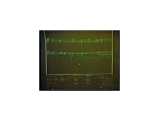 |
Scriva: A Graphical Score
Editor
(4 min. 47 sec.)
University of Toronto
1980-81 |
Scriva was the main tool
that we used for composing scores. It enabled a range of different
styles of graphical music notation. Remember the date. This
was several years before the Macintosh came out, and even more years prior
to MIDI.
Ref:
Buxton, W., Sniderman, R.,
Reeves, W., Patel, S. & Baecker, R. (1979).
The
Evolution of the SSSP Score Editing Tools.Computer Music Journal
3(4), 14-25. [PDF]
Buxton, W., Patel, S., Reeves,
W., & Baecker, R. (1981). Scope in
Interactive Score Editors. Computer Music Journal 5(3), 50-56. |
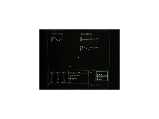 |
Objed: A Graphical Instrument,
or "Sound Object" Editior
(4 min. 40 sec.)
University of Toronto
1980-81 |
In more modern time, Objed
would be called a "voicing program". We didn't call it that, for
the same reason that the invetors of television didn't use that term to
describe what they had built either. The interesting thing here is
that the entier SSSP system was object oriented, and had pretty interesting
inheritance properties, that even today are not common in music systems.
Ref:
Buxton, W., Patel, S., Reeves,
W. & Baecker, R. (1982). Objed and
the Design of Timbral Resources. Computer Music Journal 6(2),
323-44 |
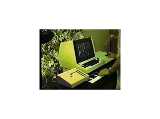 |
Conduct: An Interactive Performance
Instrument
(4 min. 50 sec.)
University of Toronto
1980-81 |
For me, first and foremost, music
is about performance. I wanted to play instruments, and be able to
improvise, adapt performances to the hall, the audience, other players,
etc. These were all things that tape-playback, the norm a the time,
simply would not permit. As I describe above in the introduction, this
part of the system was one of the most wonderful parts of all.
Ref:
Buxton, W., Reeves, W., Fedorkow,
G., Smith, K. C., & Baecker, R. (1980). A
Microcomputer-Based Conducting System. Computer Music Journal
4(1), 8-21. |
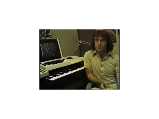 |
Summary
(57 sec.)
University of Toronto
1980-81 |
For me, this brief conclusion
is interesting even today in that it identifed issues that are still relevant.
The bad part is, I'm not sure how much younger I was then, and yet, how
much the things that I am working on are the same. |
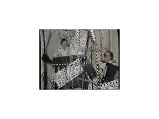 |
In Performance
(1 min. 34 sec.)
Music Gallery
Toronto
circa 1982 |
This is a short clip of a performance
that we did at the Music Gallery in Toronto, shot by The New Music,
a program that morphed into CITY TV's Much Music. It is a
fragment of a piece that I wrote for dance, accordion and synthesizer.
The accordionist is Eugene Laskewick. |
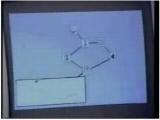 |
The Katosizer
(1 min. 40 sec.)
University of Toronto
1985 |
This was a microprogrammable synthesizer
that could be controlled using MIDI devices, such as a keyboard.
One of the most interesting aspects was that a user could program the synthesizer
using an interactive graphical dataflow language, where nodes represented
physical devices and software signal processing modules, and arcs represented
signal and control connections.
Ref:
Kitamura, J., Buxton, W., Snelgrove,
M. & Smith, K.C. (1985).
Music Synthesis by
Simulation Using a General-Purpose Signal Processing System,
Proceedings
of the 1985 International Computer Music Conference (ICMC), Vancouver,
155-158 |
|






